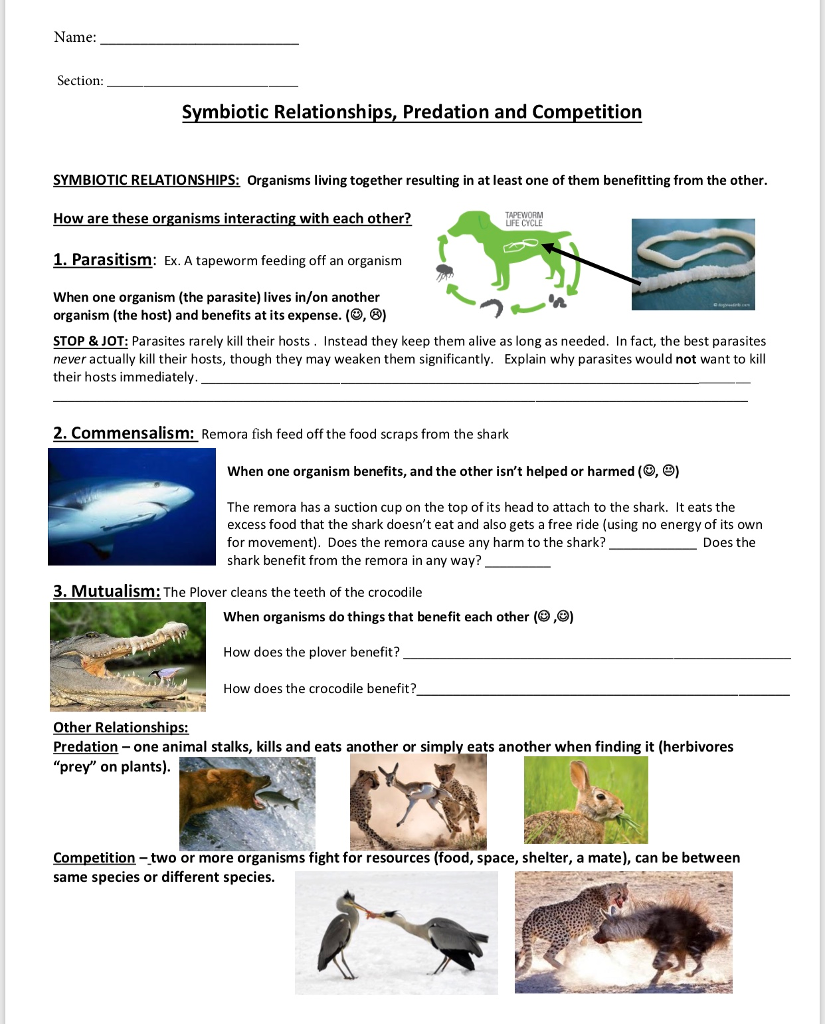Symbiotic Relationship Mutualism Math
Symbiosis defines three basic relationship types with multiple subgroups occurring between living entities.

Symbiotic relationship mutualism math. Commensalism is when one species benefits from the relationship while the other is neither harmed nor benefits from the relationship. Nature is full of symbiotic relationships such as the honey bee and flower the clown fish and anemone and your gut and the prokaryotic intestinal bacteria living inside it. Symbiosis defines three basic relationship types with multiple subgroups occurring between living entities. Mutualism describes a type of mutually beneficial relationship between organisms of different species.
Commensalism where one organism benefits and the other experiences no harm. Symbiotic relationship displaying top 8 worksheets found for this concept. Other types of symbiotic relationships include parasitism where one species benefits and the other is harmed. Mutualism where both species benefit.
Today we learn about mutualism commensalism and parasitism for animal symbiosis and symbiotic relationships. 1 each group should have 3 to 4 players. Mutualism exists when both species benefit from the symbiotic relationship. A symbiotic relationship essentially means a relationship between two organisms which may or may not benefit one or both.
Mutualism commensalism predation or parasitism. In a parasitic relationship one species benefits the parasite while the other is harmed by the relationship the host. Some of the worksheets for this concept are pen or pencil work lesson symbiosis day 1 good buddies symbiotic relationships ecoventure class symbiotic relationships symbiosis mutualism parasitism and more directions symbiotic interactions answer key biology symbiosis living together exploring symbiosis symbiosis. Mutualism where both species benefit.
This is great practice and learning for ecology and biology. Rules of the game. It is a symbiotic relationship in which two different species interact with and in some cases totally rely on one another for survival. They are commonly found on the skin as well as in the respiratory tract and the gastrointestinal tract.
This type of symbiosis is called mutualism. Commensalism is a relationship that is beneficial to the bacteria but does not help or harm the host. Most commensal bacteria reside on epithelial surfaces that come in contact with the external environment. Students will be able to define and describe examples of symbiotic relationships.
10 scenarios must be read carefully in order for students to be able to determine the ecological relationship occurring i use these materials with my midd. There are many different types of symbiotic relationships that occur in nature. This symbiotic relationship worksheet gives students great practice and review at differentiating between mutualism commensalism and parasitism. Commensal bacteria acquire nutrients and a place to.
In many cases both species benefit from the interaction. Frenemies bros and killers.


























